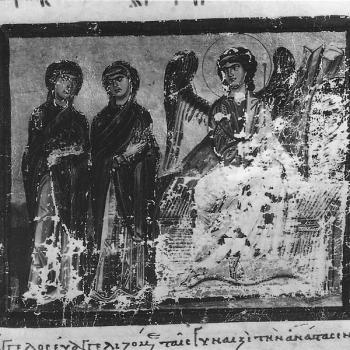Ah, Valentine’s Day. It’s a day people either love or hate, depending on their personal perspectives. A largely commercial holiday, Valentine’s Day emphasizes dates, flowers, candy, and honoring loved ones. While traditionally a day focused on the love between romantic couples, modern expansions also include love between family and friends.
Many wonder, though, how did love become associated with Valentine’s Day? What do the two have in common, and how do they overlap. Does it have anything to do with Saint Valentine? While we are at it, who was Saint Valentine, anyway? Read on to discover facts you probably never knew about Valentine’s Day (as you celebrate with some chocolate).

Pagan origins
Like many holidays, the history of Valentine’s Day is a bit more complicated than a Christian religious holiday. The origins of Valentine’s Day sort of connect to an ancient pagan festival called Lupercalia. Lupercalia was celebrated on February 15, and devoted to lovers. The Romans believed birds mated at that time of the year, thus the association with couples “pairing off.” It celebrated spring, especially in connection with fertility. The festival acknowledged at least two deities, including a she-wolf who protected herds and Faunus, a fertility deity (the Roman version of the Greek god, Pan).
How Lupercalia became Valentine’s Day isn’t clear. In the fourth century, Gelasius I forbade Christian participation in the pagan festival. Whether he offered the feast of Saint Valentine as a substitutionary holiday is unknown. The Feast of Saint Valentine first appears in records in the eighth century. It appears Valentine’s Day didn’t become the “day of love” until the fifteenth century.
Who was Saint Valentine?
There are three different Saint Valentines with a possible connection to February 14. Beyond this fact, no one agrees about much else. It’s unclear if they are different people, different legends of the same person, or stories of different people pieced together under one name. No one knows for certain which Saint Valentine we celebrate on February 14. It could be one of them, all three, or a combination.
Valentine 1
The first Saint Valentine was a priest who lived during the third century (around 270). He was arrested by Claudius II for aiding persecuted Christians. Some say he married Christian couples so the men could avoid conscription in the Roman army. While in jail, he healed the jail-keeper’s daughter from blindness. Rumor has it he would sign his letters to the jail-keeper’s daughter, “from your Valentine.” He was martyred on Palatine Hill at the site of an altar to the Roman god, Juno.
Valentine 2
The second Saint Valentine was Bishop of Terni, a city approximately sixty miles outside of Rome. Little is known about him, save a legend of also healing a blind girl. While under house arrest with the Judge Asterius, the judge challenged him to prove the validity of Jesus by healing his blind daughter. After her healing, the judge became a Christian. He was persecuted by the Roman government for converting a prominent family, and was beheaded in 273.
Valentine 3
The third Saint Valentine is largely a mystery. I’ve read at least two possibilities for his story. One says he an early church martyr in Africa, along with several companions. A second legend says he was a warrior and military personality at some point in time. Some say it was during the early Holy Roman Empire or during the crusades.
The name “Valentine” is nowhere found in the early records of Christian martyrs. That leaves the exact history of these different saints spurious. In response, the Feast of Saint Valentine was removed from the Roman Catholic calendar in 1969. Modern observances are local or regional rather than a churchwide observance. The Eastern Orthodox Church recognizes the first two Saint Valentines on July 6 and July 30 each year.
Is Valentine the “Patron Saint of Lovers?”
All three legends of Saint Valentine have one thing in common: they were all martyrs. There’s nothing romantic about their stories. Most likely, none of the three were married or coupled. The association between Valentine’s Day and love came much later, somewhere around the fourteenth century. Valentine’s Day combines many European folk traditions associated with celebration of spring, including giving gifts, eating chocolates and candy, and sending greetings to friends and relatives. Formal “valentines” date to the 1500s. The association with love dates to high court fiction, depicting romances based on chivalry. Over time, these traditions became associated with real life courting practices. The holiday, therefore, is most likely a combination of early spring festivals mixed with a religious figure and a whole lot of lore. The result is, what we know today to be Valentine’s Day.
Saint Valentine is the patron saint of Terni (Italy), epileptics, and beekeepers.
The importance of love
I’ll be the first to admit: Valentine’s Day isn’t my favorite day of the year. Its commercial nature has a way of making single, widowed, divorced, and lonely people feel second class. Romantic couples feel pressure to purchase items, as if that’s the only way we show appreciation to others. The entire day excludes aromantic individuals (a community to which I belong). I’m not crazy about its pagan roots. I also don’t believe we should restrict love – even the idea of love – to one day per year.
At the same time, we can all use a reminder to the importance of love. It doesn’t hurt us to remember that love, in all ways, should be demonstrative. It’s not enough to say we love someone; we must show them. It’s not enough to love a romantic partner. The Bible indicates we should love everyone – even those who hate us.
Love is patient, love is kind. It does not envy, it does not boast, it is not proud. It does not dishonor others, it is not self-seeking, it is not easily angered, it keeps no record of wrongs. Love does not delight in evil but rejoices with the truth. It always protects, always trusts, always hopes, always perseveres. (1 Corinthians 13:4-7, NIV)
These verses love must be a continual action, as love “always” does. It’s more than a box of candy or lingerie bought out of obligation. Love “always” does because love is always there.
The bottom line
Remembering the importance of love goes a long way to build healthy, functional relationships. But rather than seeing love as a commercial endeavor, it’s important our love for one another is sincere. 1 Peter 1:22 reminds us:
Now that you have purified yourselves by obeying the truth so that you have sincere love for each other, love one another deeply, from the heart. (NIV)
We love because He first loved us. Now go and do likewise…not just on Valentine’s Day, but every day of the year.














